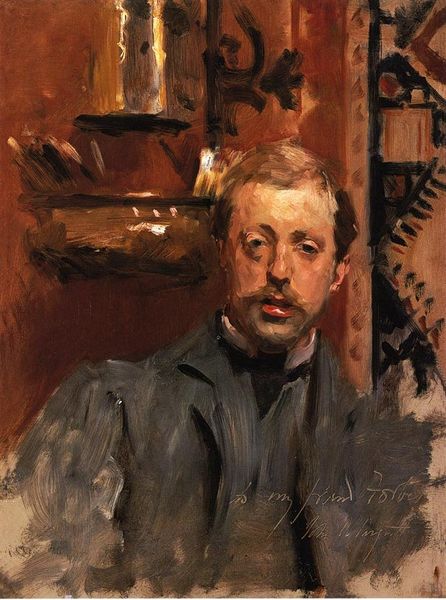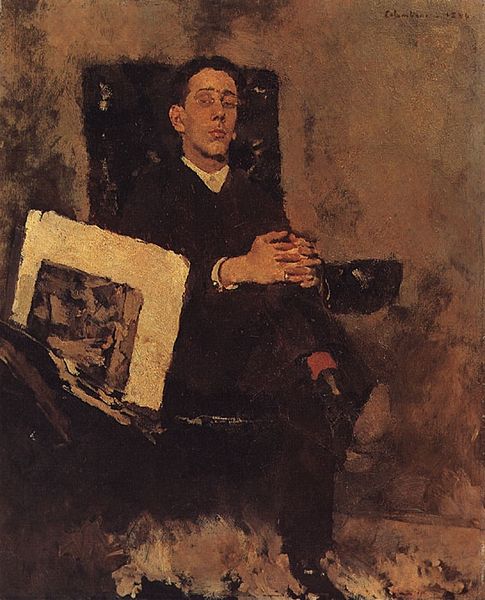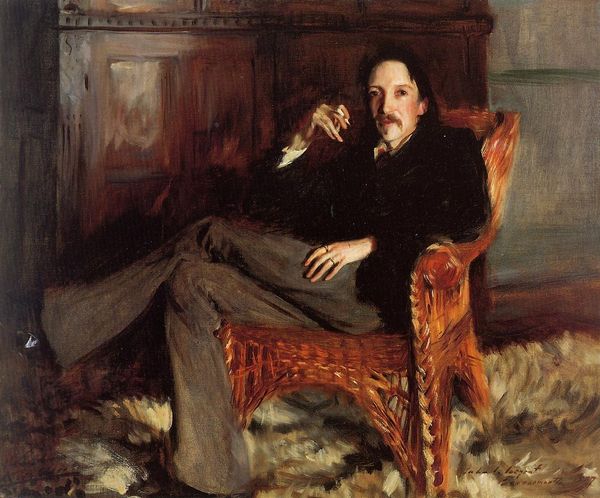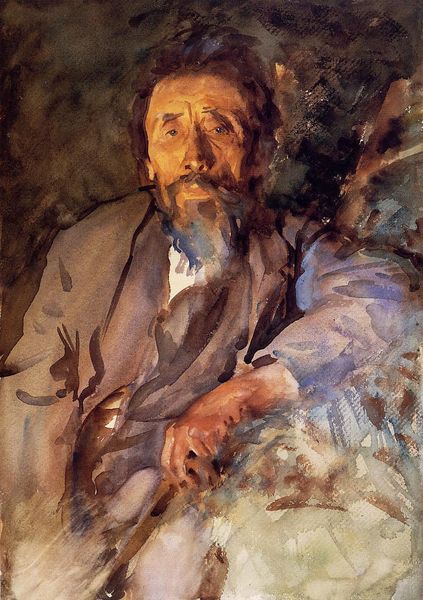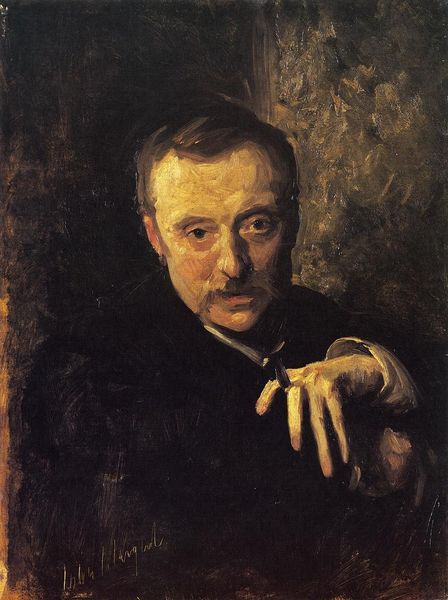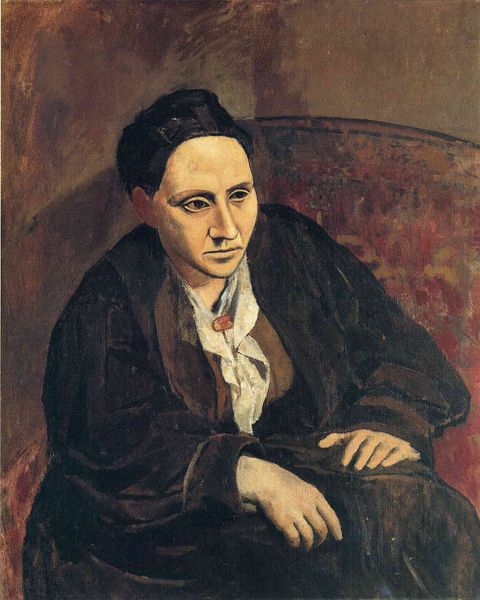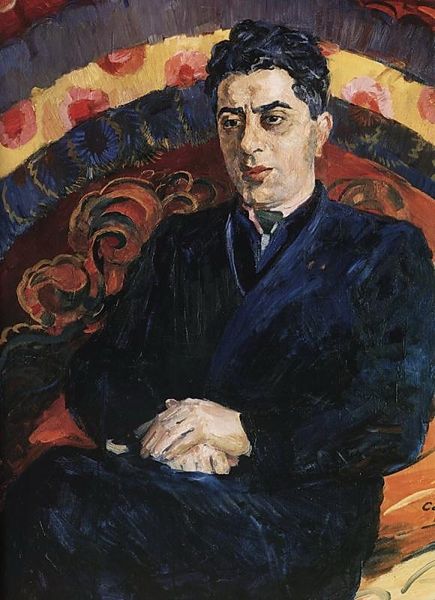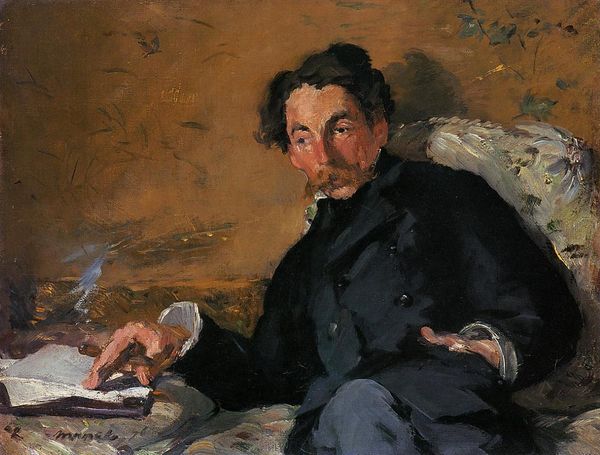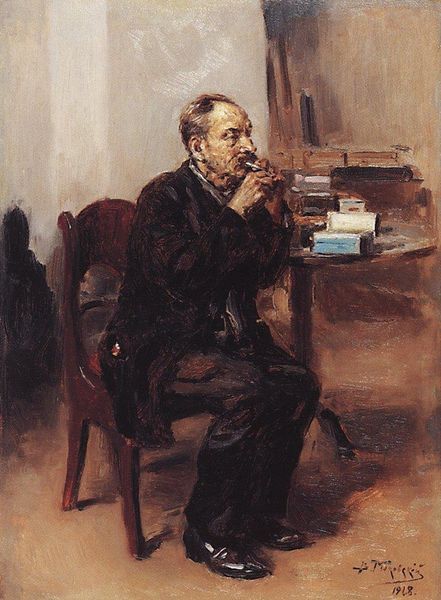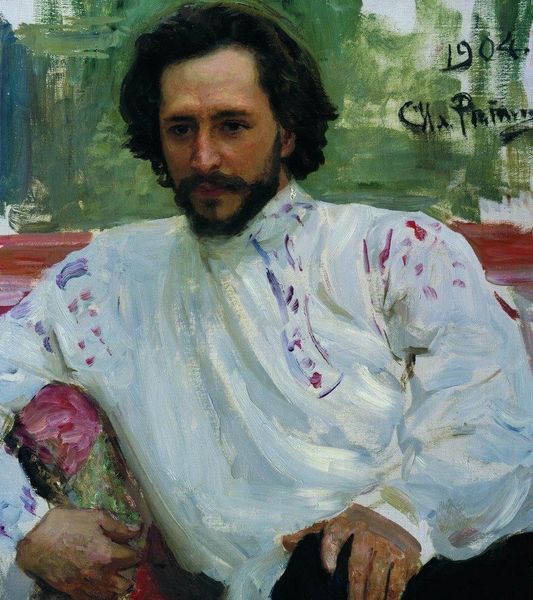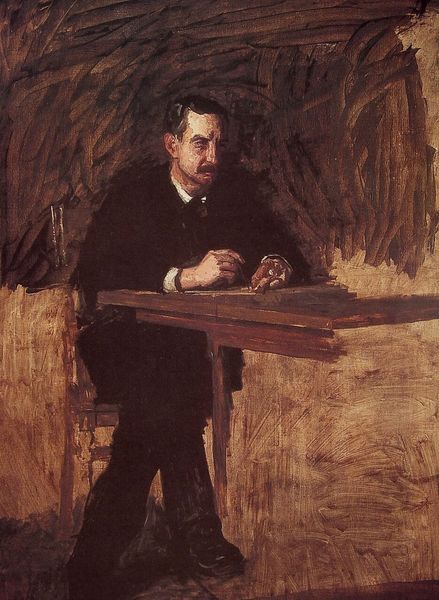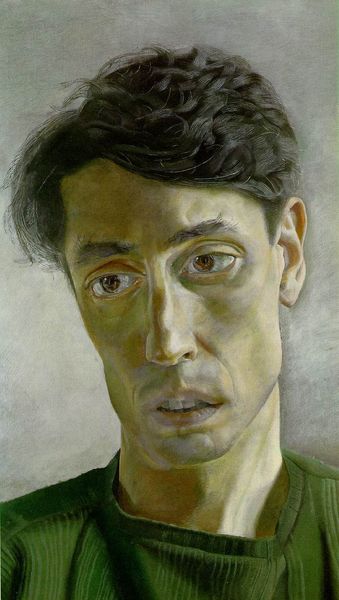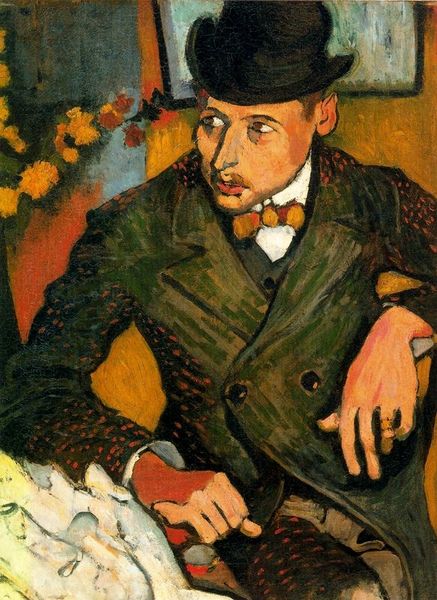
Dimensions: 28.5 x 20 cm
Copyright: Public domain
Curator: Take a look at Giovanni Boldini’s “Portrait of the Painter Joaquin Araujo Ruano,” painted in 1882. What are your initial thoughts? Editor: It strikes me as melancholic. The muted tones and the sitter's weary gaze…there’s a profound sense of introspection here. I am also intrigued by the props around him. They are, without any doubt, speaking of his work as a painter. Curator: I see it a bit differently. To me, it screams material culture! This image is rife with hints on late 19th-century artistic production. Oil paint, canvas…look at the brushstrokes, how visible they are, showcasing the very act of applying paint. The material process of image making is the story here! Editor: That's a good point, but even the brushstrokes, in their apparent haste, speak to a Romantic sensibility. It's not just about the paint; it’s about the passion of the act. And that hat! Artists of that time had such peculiar fashion sense that was hinting about their occupation, class, and intellectual affiliation. It speaks volumes about identity, cultural milieu, how this man positioned himself. Curator: Indeed, and if you look at the context, portraiture itself was a crucial marker of status and visibility. Patronage was important for a portrait artist's existence. Capturing the likeness and essence of individuals was a source of income and a matter of survival. We cannot omit the conditions of possibility, or take for granted what may have seemed at first look so candid. Editor: Certainly. And his pose; leaning casually on the chair but with such elegant hands, conveys a kind of relaxed artistic temperament, which was key for success, so to say. Perhaps the symbolism works in concert with what he aimed for as a public persona. Curator: Yes, thinking about all that he wants us to believe when looking at the painting is fundamental to unveiling these kinds of narratives, hidden and subtle. I agree! Editor: Indeed! By exploring the symbolic landscape, while acknowledging the artist's material agency, we can appreciate the artwork as both a testament to material production and cultural expression. Curator: It makes one contemplate the intersection of labour and self-representation in the art world. The conditions under which it emerges and thrives are not to be forgotten. Editor: Precisely. And I believe we now see beyond the surface.
Comments
No comments
Be the first to comment and join the conversation on the ultimate creative platform.
